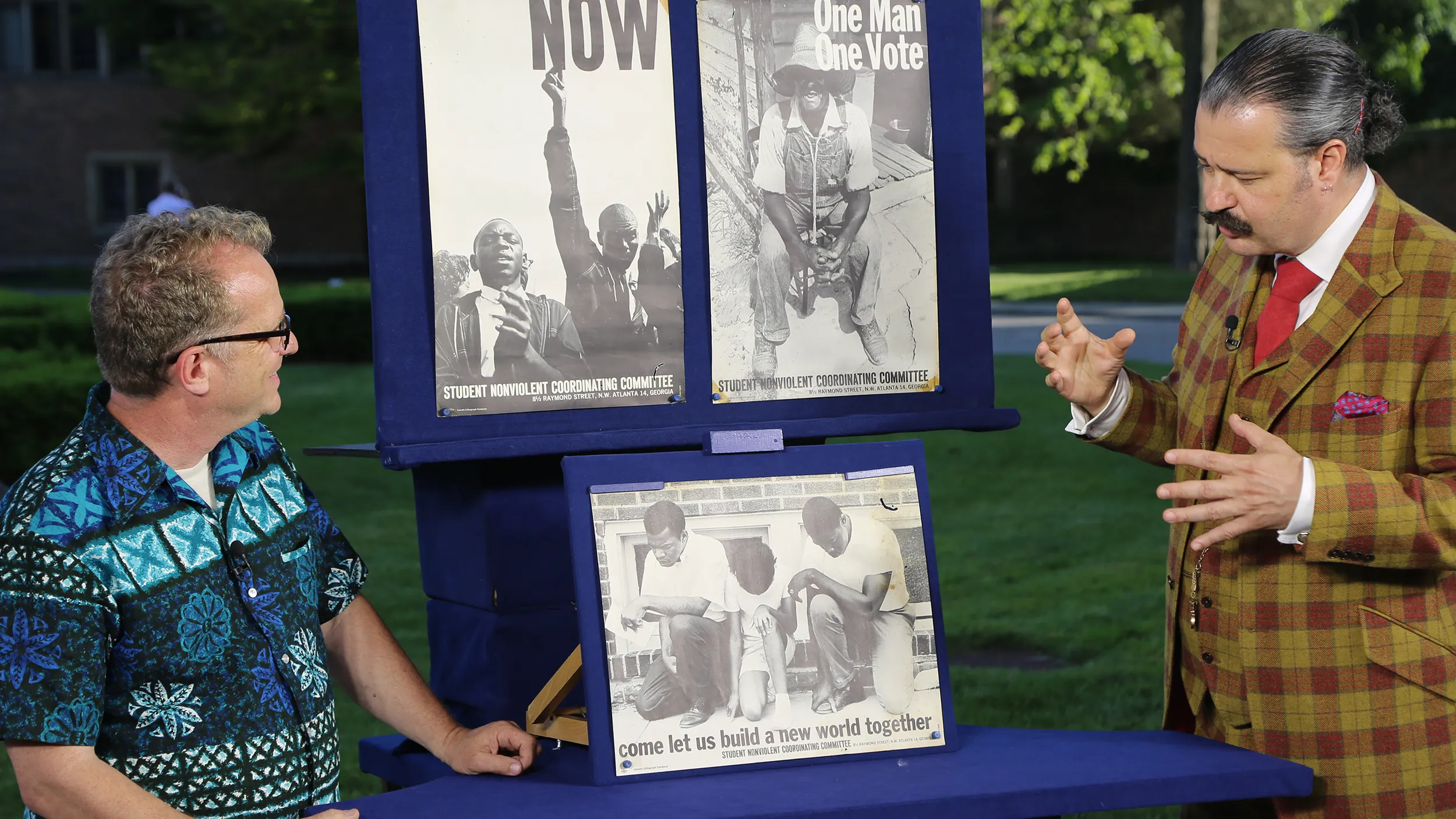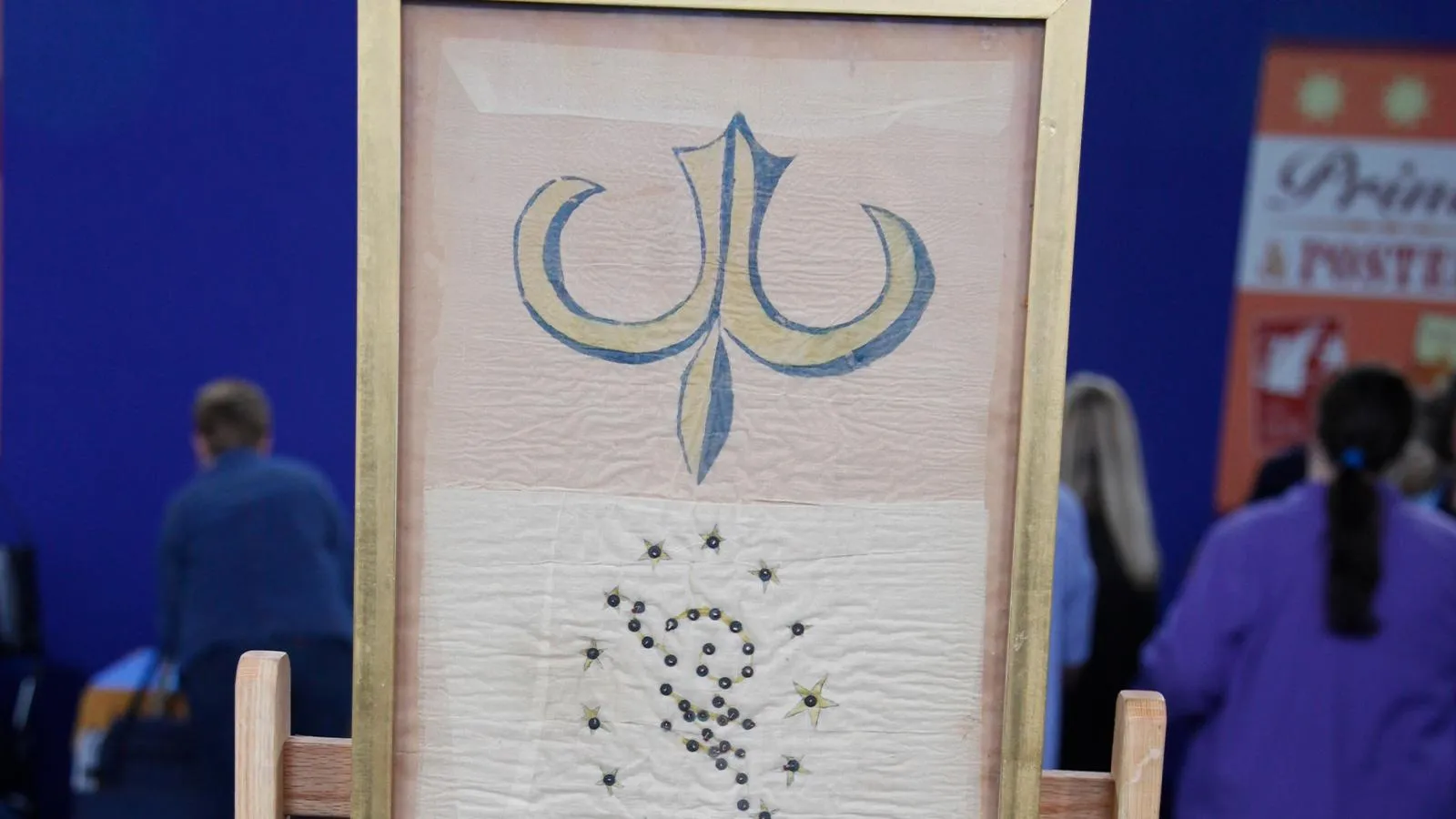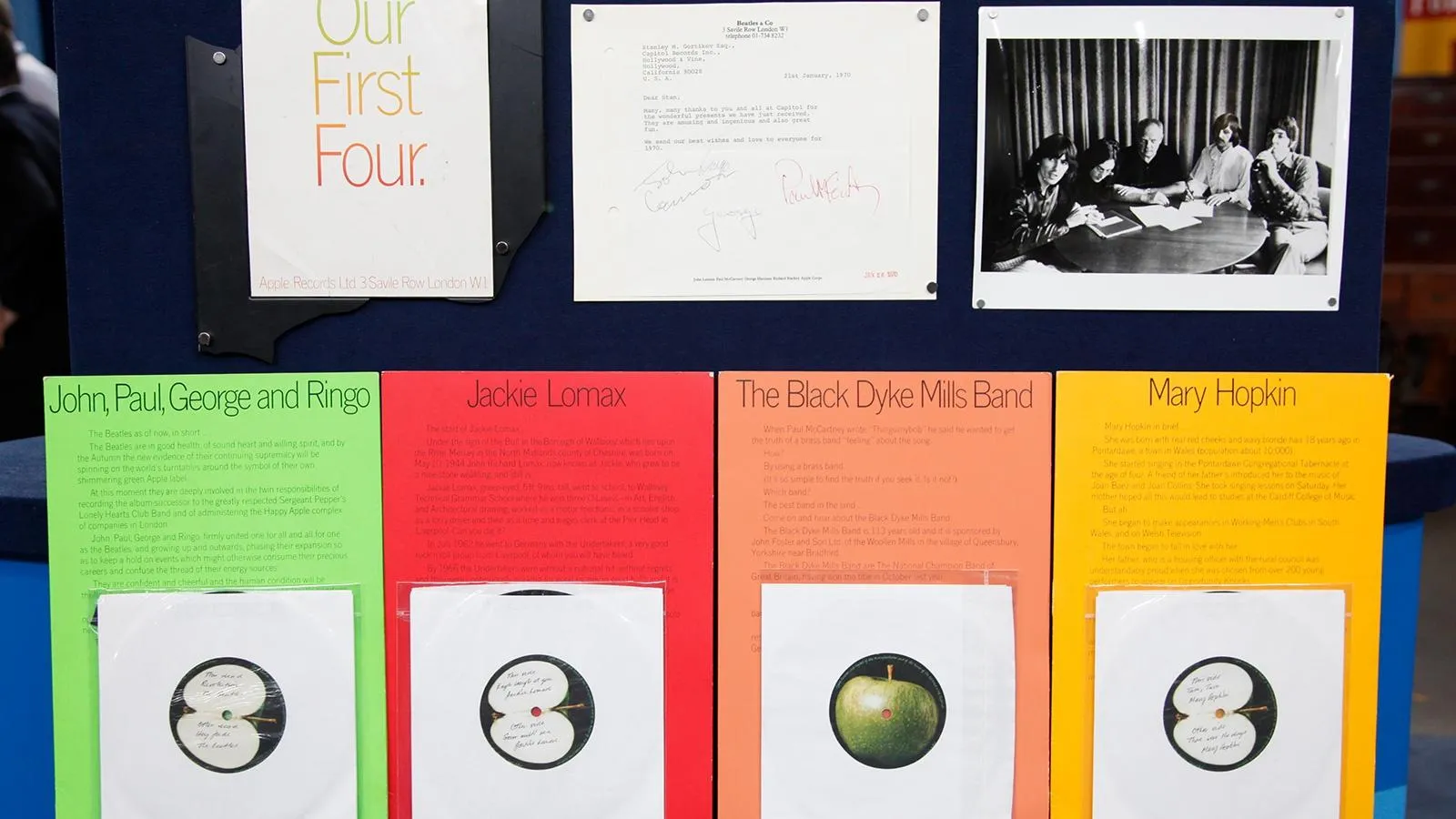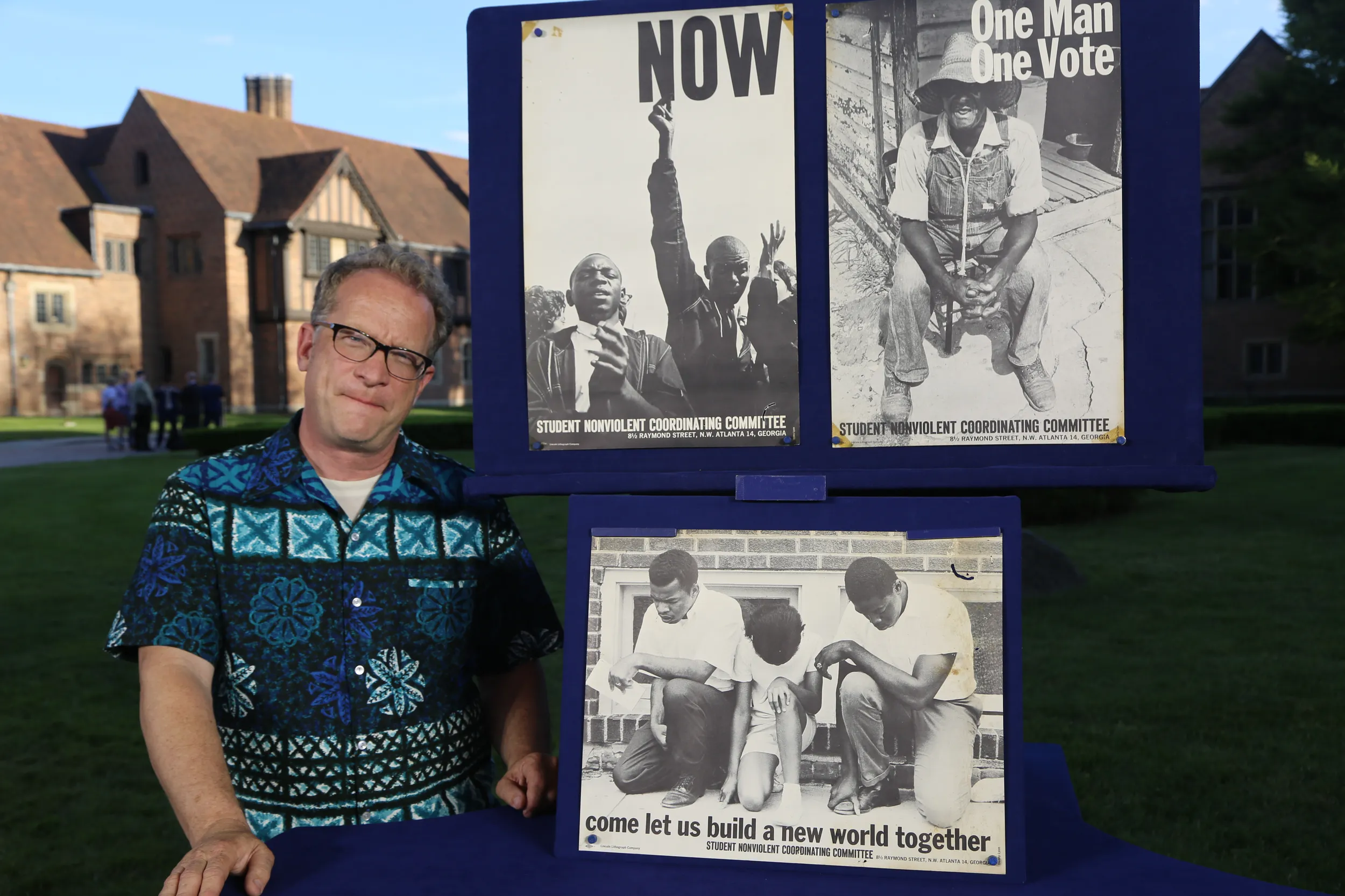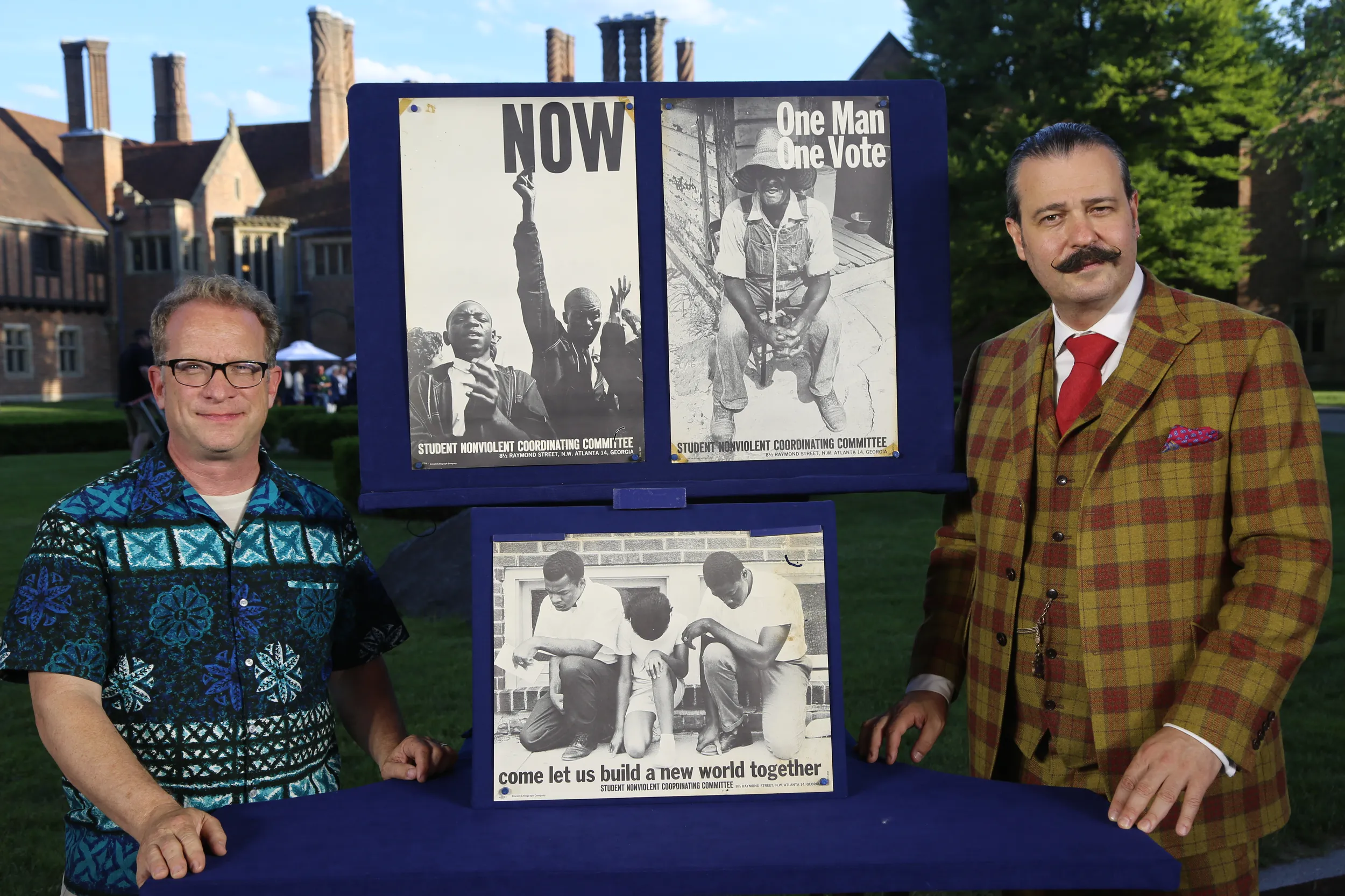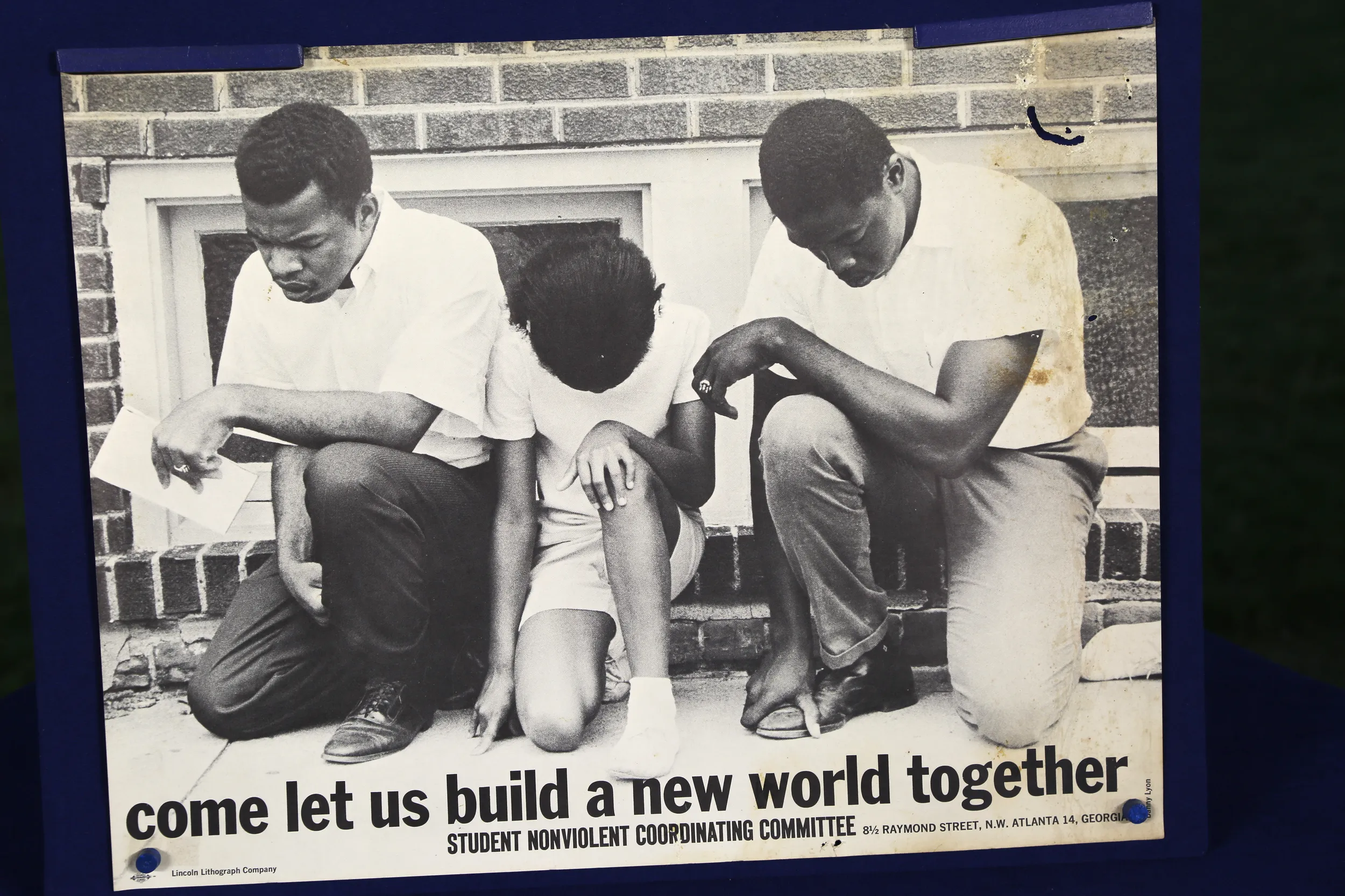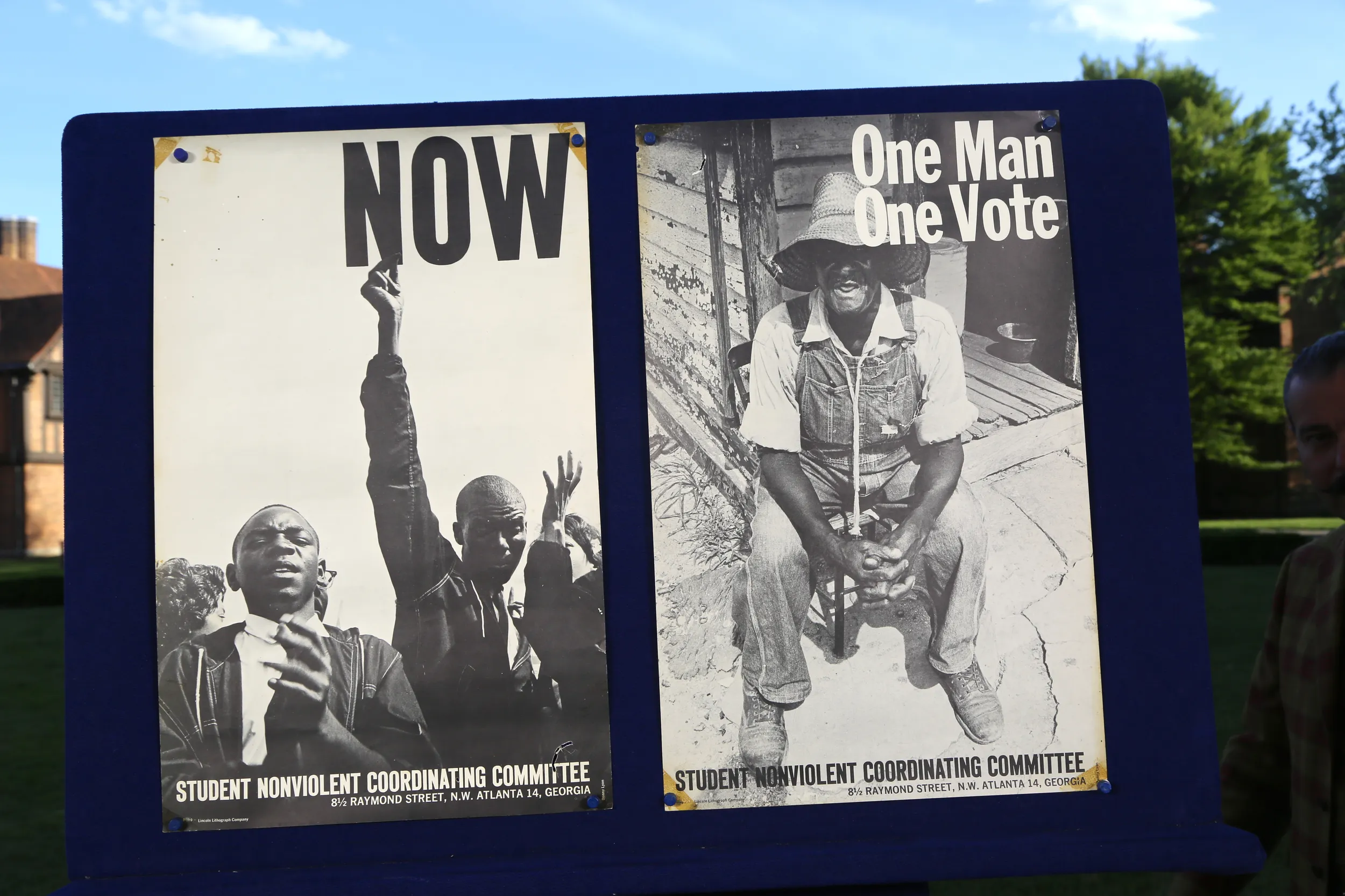GUEST: I bought them a few years ago from a garage sale. They were with a number of dorm-type posters, and I knew I was buying a piece of history and I knew it was an important piece of history, but I really haven't had a chance to, to really research them. I figured they were from the, probably the early to mid-1960s, based on their content.
APPRAISER: And how much did you pay for them?
GUEST: Well, I paid 25 cents apiece for them, and I think they charged me that because they do have some holes and a little bit of, a little bit of wear.
APPRAISER: Quite frankly, they have been used.
GUEST: Mm-hmm.
APPRAISER: Uh, hey have tape marks on the corners where they were taped to the walls. You'll notice on each there's a tear, and when they were all rolled together at some point, they were torn in the same place, and some animals got to them; there were little nibbles taken out.
GUEST: Seems so.
APPRAISER: They look like dorm room posters.
GUEST: Uh-huh.
APPRAISER: But more than just dorm room posters. As you said, they're, they're a piece of history. And more than just a piece of history, they're a piece of recent history. They're pieces of the Civil Rights Movement in America. Now, these three photos were taken by a photographer named Danny Lyon. Danny Lyon is a very prominent and famous photographer who really made his name by elevating social democratic photography to an art form.
GUEST: Hm.
APPRAISER: This was his milieu, this is where he shone, and he did a lot of work with the Student Nonviolent Coordinating Committee, the SNCC, or "snick," as they were known. And SNCC was part of the Civil Rights Movement that was formed in relation to the sit-ins that began happening in the early 1960s. And within the Civil Rights Movement, they had wanted things to move a little bit faster and a little bit more aggressively. And these posters were advocating the work of SNCC within the Civil Rights Movement. They date to around 1962, and the images are these images from marches, they're images from protests. The one next to you that says, "NOW," was taken at the march in Washington, DC, where Martin Luther King gave his "I Have a Dream" speech.
GUEST (whispers): Wow.
APPRAISER: One of these posters to me stands out more than the other ones.
GUEST: Mm.
APPRAISER: And that's the one on the bottom. "Come let us build a new world together." What to me stands out about it are the people who are involved in the photograph. Do you recognize any of them?
GUEST: I, no, I don't.
APPRAISER: I only recognize one, to be honest, and that's the figure closest to you. That's John Lewis. Congressman John Lewis...
GUEST: Sure.
APPRAISER: Who was then a 22-year-old civil rights activist. He's been a congressman now for over 30 years, and this was when he was involved in the movement. So, coincidentally, he was caught in this photograph in this incredibly poignant moment...
GUEST: Mmm.
APPRAISER: Praying for a new world together, a better world. And it's great. Two of these three posters have come up at auction before, the John Lewis poster and the "One Man, One Vote" poster.
GUEST: Okay.
APPRAISER: The "NOW" poster has never come up for auction. In my estimation, in their current condition, were they to come up at auction, with all of their Civil Rights poignancy, with all of their, the prominence of the figures, with the importance of the photographer, I would estimate these three posters between $7,000 and $10,000.
GUEST (slowly): Okay.
APPRAISER: And as I understand it, you paid 75 cents.
GUEST: Yes, I did.
APPRAISER: I'm a little better at history than I am at math, but that's a very good return.
GUEST: Uh, yeah.
APPRAISER: The John Lewis poster came up for sale as recently as March 2018, the first and only time it's ever come up for auction, and in perfect condition, it sold for $6,500.
GUEST (softly): Wow. I'm flabbergasted, I really am. I collect posters, but not these kinds of posters, so... I guess I did all right.

